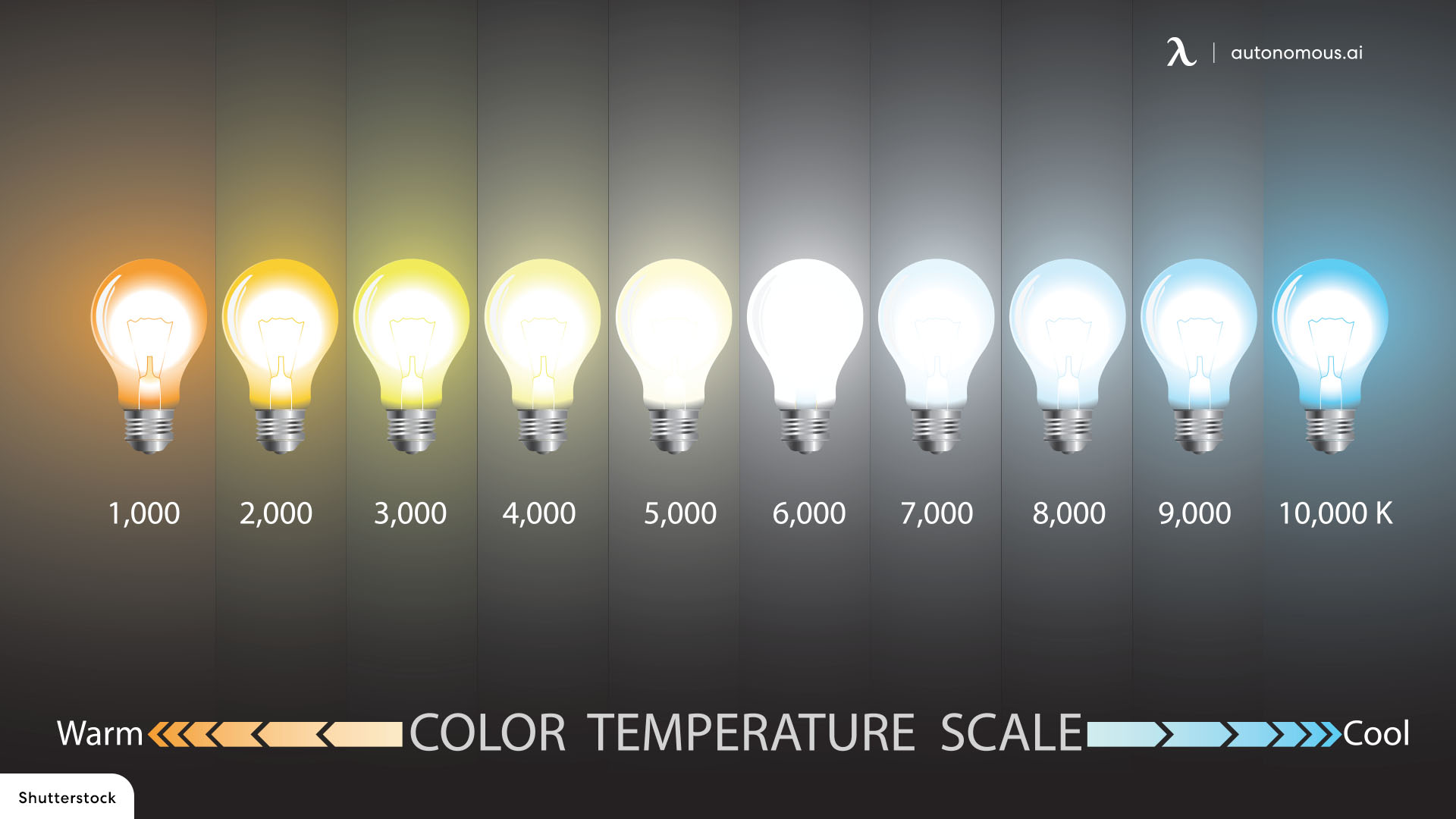
Daylight or Soft White for Office: The Ultimate Guide to Office Lighting
Table of Contents
When designing an office space, one of the most critical factors to consider is lighting. The type of light in your workspace can significantly impact productivity, mood, and overall well-being. In the debate between daylight or soft white for office lighting, understanding the differences and benefits of each can help you create a space that fosters both comfort and efficiency.
Daylight vs Soft White: What’s the Difference?
To make an informed decision about office lighting, it’s essential to understand the fundamental differences between daylight and soft white bulbs.
Daylight bulbs emit a bright, white light that closely mimics natural sunlight. With a color temperature ranging from 5000K to 6500K, these bulbs provide a crisp, invigorating light that enhances focus and visual clarity. This type of lighting is particularly effective in settings where tasks require high levels of concentration, such as in offices where detailed work is performed.
On the other hand, soft white bulbs emit a warm, yellowish light with a color temperature of 2700K to 3000K. This lighting creates a cozy, inviting atmosphere, which can help to reduce stress and promote relaxation. Soft white bulbs are often used in residential settings or office areas where a calm, comfortable environment is desired.
The choice between daylight or soft white for office settings depends largely on the type of work being done and the atmosphere you wish to create. For more detailed insights into lighting options, you might want to explore the differences between yellow light vs white light to better understand how light color affects your workspace.
| Feature | Daylight | Soft White |
|---|---|---|
| Color Temperature | 5000K - 6500K | 2700K - 3000K |
| Light Quality | Bright, white light that mimics natural sunlight | Warm, yellowish light that creates a cozy ambiance |
| Ideal for | Task-oriented workspaces, detailed tasks, areas needing high concentration | Relaxation areas, lounges, meeting rooms, spaces requiring a comfortable atmosphere |
| Impact on Circadian Rhythms | Enhances alertness and focus during the day; may disrupt sleep patterns if used late | Promotes relaxation, less likely to interfere with sleep patterns |
| Brightness Perception | Generally perceived as brighter and crisper | Softer and more diffused, gentle on the eyes |
| Best Suited for | High-energy work environments, areas with little natural light | Spaces meant for unwinding, casual meetings, or where a warm atmosphere is desired |
| Design Compatibility | Complements modern, minimalist, and bright office designs | Pairs well with cozy, traditional, or inviting office designs |
| Examples of Use | Task lighting, workstations, areas requiring high visibility | Break rooms, lounges, executive offices, informal meeting spaces |

How Light Temperature Affects Health and Productivity
Light has a profound effect on human circadian rhythms, which are the natural cycles of wakefulness and sleep that our bodies follow over a 24-hour period. These rhythms are heavily influenced by exposure to light and dark. Understanding how different light temperatures affect circadian rhythms can help in choosing the right office lighting.
Daylight bulbs, with their high color temperature, are known to mimic natural daylight, which can help regulate circadian rhythms by signaling to the body that it is daytime and time to be alert. This can be especially beneficial in office settings where productivity is a priority. However, prolonged exposure to daylight bulbs, especially in the evening, can disrupt sleep patterns by tricking the body into thinking it’s still daytime.
On the contrary, soft white bulbs offer a more gentle and relaxing light that is less likely to interfere with circadian rhythms, making them ideal for evening use or in office areas where a calming environment is more important than alertness. This type of light is also beneficial for reducing eye strain and promoting mental well-being, as it creates a more soothing atmosphere.
Moreover, light temperature can impact physical well-being. For example, cooler light from daylight bulbs can reduce the strain on the eyes, especially during tasks that require precise vision. On the other hand, the warmer light of soft white bulbs can create a more relaxed environment, potentially reducing stress and anxiety levels.
Incorporating the right balance of lighting in your office can contribute to a more productive and healthy work environment. Whether you’re designing a modern office design or creating a calming therapy office design, understanding the effects of light on circadian rhythms and mental health is crucial.
Soft White vs Daylight for Office
When choosing between soft white vs daylight for office lighting, it’s important to consider the specific needs of your workspace. Each type of lighting has its unique benefits, and the decision should be based on the type of work being performed, the office design, and the desired atmosphere.
Daylight bulbs are typically preferred in offices where tasks require high levels of focus and accuracy. The bright, clear light helps reduce eye strain and enhances visibility, making it easier to perform detailed work. This makes daylight bulbs an excellent choice for workspaces such as modern industrial office designs where precision and attention to detail are essential.
Soft white bulbs, in contrast, are better suited for spaces where a warm, inviting ambiance is more important than intense focus. This type of lighting is ideal for areas such as meeting rooms, lounges, or executive offices, where creating a relaxed and welcoming environment is the priority. In a small executive office design, for instance, soft white bulbs can help foster a comfortable atmosphere conducive to discussions and decision-making.
The choice between daylight and soft white bulbs also depends on the overall design aesthetic of your office. For example, if you’re going for a minimalist office design, daylight bulbs might complement the clean, streamlined look better, while soft white bulbs could enhance the warmth and simplicity of the space.
Is Soft White or Daylight Brighter?
Brightness is a key factor to consider when choosing between soft white or daylight bulbs for your office. The perception of brightness is influenced by the color temperature of the light.
Daylight bulbs are generally perceived as brighter because of their higher color temperature, which produces a light closer to that of natural sunlight. This brightness can be beneficial in work environments where maximum visibility is required, such as in detailed-oriented tasks or in spaces that lack natural light. In a corporate office design, daylight bulbs can help create an energetic and focused atmosphere that enhances productivity.
Soft white bulbs, while not as bright as daylight bulbs, offer a softer, more diffused light that can still be quite effective in an office setting. This type of lighting creates a warm glow that is easier on the eyes, especially in areas where the goal is to create a calm and inviting environment. Soft white bulbs might be more appropriate in settings where reducing glare and creating a comfortable ambiance is important, such as in a therapy office design.
When deciding on the brightness of your office lighting, it’s essential to consider both the functionality and the atmosphere you want to achieve. A balance of brightness and warmth is often the key to creating a productive and comfortable work environment.
Tips on How to Choose the Right Lighting
Choosing the right lighting for your office is crucial in creating a space that meets the specific needs of your business while also fostering a positive work environment. Here are some tips on how to select the best lighting based on your office's purpose and vibe:
- Understand the Office's Purpose
The first step in choosing the right lighting is to consider the primary function of the space. For example, if your office is primarily used for focused work, such as in a modern classic office design, daylight bulbs might be the best choice. If the space is used for meetings or relaxation, soft white bulbs could be more appropriate.
- Consider the Aesthetic
The lighting in your office should complement the overall design aesthetic. In a black and white office design, for instance, daylight bulbs could enhance the sleek, modern look, while soft white bulbs might add a touch of warmth.
- Evaluate the Natural Light
Consider how much natural light the office receives. In spaces with ample natural light, you might not need as much artificial lighting. However, in areas with little to no natural light, using daylight bulbs can help replicate the brightness of sunlight and keep the space feeling open and vibrant.
- Think About Employee Well-being
The well-being of employees should be a top priority when choosing office lighting. In a small business office design, for example, a mix of daylight and soft white bulbs can create a balanced environment that promotes both productivity and relaxation, helping to reduce stress and improve overall job satisfaction.
- Balance Task and Ambient Lighting
Task lighting, such as desk lamps, can be paired with ambient lighting to create a well-rounded lighting scheme. In a startup office design, using a combination of daylight bulbs for task lighting and soft white bulbs for ambient lighting can create an energetic yet comfortable environment.
- Test the Lighting
Before committing to a particular type of lighting, it’s a good idea to test different bulbs in your office space. This will allow you to see how the lighting affects the room and whether it meets the needs of your employees.
FAQs
What are soft white light bulbs?
Soft white bulbs (2700K–3000K) emit a warm, cozy glow similar to traditional incandescent lighting. They’re commonly used in living rooms, bedrooms, and lounge areas.
Is soft white light yellow?
Yes, soft white bulbs have a yellowish tint that creates a warm, relaxing atmosphere. This makes them better suited for comfort-focused spaces rather than offices.
What color is soft white?
Soft white usually appears as a warm yellow-to-golden tone, providing gentle, ambient light. It’s softer on the eyes compared to brighter daylight bulbs.
What do soft white LED lights look like?
Soft white LEDs look warm and slightly yellow, similar to incandescent bulbs. They create an inviting, cozy vibe, making them ideal for break rooms or spaces meant for relaxation.
Are daylight bulbs white or yellow?
Daylight bulbs (5000K–6500K) appear much whiter and cooler than soft white. They mimic natural daylight and often have a bluish undertone that boosts alertness.
Are daylight bulbs yellow?
No, daylight bulbs are not yellow. They lean toward a crisp white or slightly blue tone, unlike the warm yellow hue of soft white bulbs.
Are daylight bulbs the brightest?
Daylight bulbs often feel brighter because of their higher color temperature, even if the lumens are the same as soft white. The cooler tone makes them appear sharper and more energizing.
Are daylight bulbs cool or warm?
Daylight bulbs are considered cool light because of their bluish-white tone. This cooler spectrum is linked to increased focus and productivity.
Are daylight bulbs good for plants?
Daylight bulbs can help indoor plants grow because they mimic natural light more closely than soft white. However, they are not as effective as dedicated grow lights designed with the full plant spectrum.
Which is better for office lighting: soft white or daylight?
Daylight bulbs are generally better for office spaces because they reduce eye strain, support alertness, and improve productivity. Soft white bulbs are better for areas where you want warmth and relaxation rather than focus.
Does office lighting affect productivity and health?
Yes. Daylight tones help regulate circadian rhythms, boost energy, and improve mood, while warm soft white tones promote relaxation. The right lighting choice can directly influence mental health, focus, and overall comfort at work.
Can I mix soft white and daylight bulbs in the office?
Yes, mixing can work well. Use daylight in task areas where focus is needed and soft white in lounges or break rooms. This creates a balance between productivity and comfort.
Conclusion
Choosing between daylight or soft white for office lighting ultimately depends on the specific needs of your workspace, the type of tasks performed, and the atmosphere you want to create. Daylight bulbs are perfect for enhancing productivity and focus, closely mimicking natural sunlight to keep energy levels high. In contrast, soft white bulbs create a warm, inviting ambiance that promotes relaxation, making them ideal for areas where comfort and a calm environment are key.
For a balanced and effective lighting setup, consider combining both daylight and soft white lighting. Use daylight bulbs in work areas to maintain focus and clarity, while soft white bulbs can be placed in break rooms or meeting areas to foster a more relaxed atmosphere. Additionally, consider incorporating a monitor backlight to reduce eye strain during extended screen use, further enhancing your workspace's functionality and comfort.
Understanding the differences between soft light vs warm light is also essential, as it helps you tailor your office lighting to suit both practical and aesthetic needs. Whether you’re designing a Japanese office that emphasizes minimalism and serenity or creating a dynamic workspace that requires bright, focused lighting, thoughtful choices in lighting can transform your office into a productive and welcoming environment.
Spread the word
.svg)







